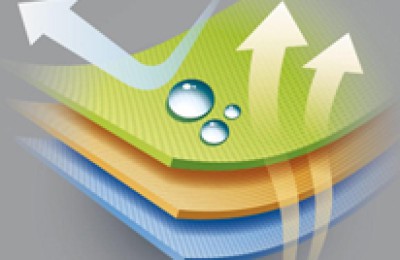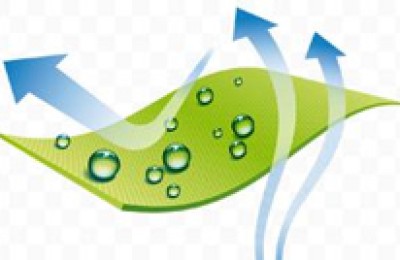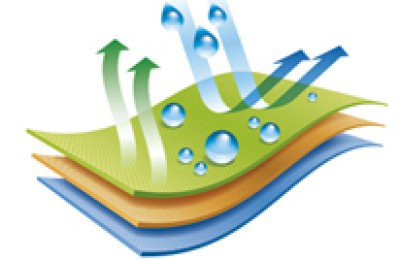Current status and development trends of fabric antibacterial finishing and antibacterial finishing agents
Current status and development trends of fabric antibacterial finishing and antibacterial finishing agents
1. Foreword
In daily life, microorganisms play a very important role. People are exposed to a variety of bacteria, fungi and other microorganisms every day. Some microorganisms are beneficial to humans, while many microorganisms are harmful to humans. Harmful microorganisms will grow and reproduce rapidly under suitable environmental conditions, and spread diseases through contact, affecting people’s health. Textiles are very easy to breed bacteria and are an important source of disease transmission, so the antibacterial finishing of textiles is of extremely important significance. With the rapid development of industry and the improvement of people’s living standards, people’s awareness of hygiene has further improved, and antibacterial textiles have become more and more popular among consumers. Antimicrobial textiles are used in a wide range of applications such as home textiles, underwear, sportswear, upholstery, hospital, food processing and pharmaceutical workwear, hospital gowns, packaging materials, etc.
2. Mechanism of antibacterial finishing
2.1 Mechanism of antibacterial finishing of fabrics
Antibacterial finishing of fabrics is based on three mechanisms: controlled release; regeneration principle; barrier or blocking effect.
2.1.1 Controlled release: Antibacterial-finished fabrics release antibacterial agents in a controlled manner at a certain temperature and humidity at a rate sufficient to kill or inhibit the growth of bacteria or fungi.
2.1.2 Regeneration principle: When fabrics treated with special antibacterial finishing agents are washed or irradiated by radiation, the covalent bonds between the finishing agents and fibers on the fabrics are broken and the bactericide is continuously regenerated, thereby achieving the purpose of sustained antibacterial effects.
2.1.3 Barrier or blocking effect: Prevent microorganisms from passing through the fabric by forming an inert physical barrier layer or coating on the fabric; or coating the fabric with a film with direct surface contact activity. When bacteria interact with antibacterial finishing agents After contact, it destroys the metabolism of the cell wall through adsorption and other effects, preventing the growth of bacteria.
2.2 From a bacteriological point of view, antibacterial finishing agents can achieve bacteriostatic or sterilizing purposes through the following ways:
1) Chemically reacts with proteins in bacterial cells and destroys their functions;
2) Inactivate various metabolisms in bacterial cells, thereby killing bacteria;
3) Inhibit the formation of robes, block DNA synthesis, and inhibit its growth:
4) Destroy the energy release system in cells;
5) Accelerate the phosphate redox system and disrupt the normal growth system of cells;
6) Through charge adsorption, the cell wall of bacteria is ruptured, thereby killing bacteria;
7)Hinder the electron transfer system and the generation of amino acid transesterification.
3. Antibacterial agents
The ideal antibacterial agent must be safe, low-toxic, have broad-spectrum antibacterial properties, have strong antibacterial effects, use a small amount, do not cause allergic reactions or damage to the skin, cannot affect the wearing performance of the fabric, have little impact on the performance and appearance of the textile, and do not affect the appearance of the fabric. Common textile dyeing and finishing processing.
There are many kinds of antibacterial agents, and generally they can be divided into two categories: dissolving type and non-dissolving type [2]; dissolving type antibacterial finishing agent does not chemically combine with the fabric and has poor durability; non-dissolving type antibacterial finishing agent can be combined with the fabric. The fabric forms chemical bonds and is durable.
3.1 Inorganic antibacterial finishing agent
Inorganic antibacterial finishing agents make use of the antibacterial ability of metal ions such as silver, copper, and zinc, and combine these metal ions with carriers (silicon, apatite, zeolite, lead phosphate and other inorganic materials through physical adsorption or ion exchange). Compounds) are used to make antibacterial finishing agents. Among inorganic antibacterial finishing agents, silver-based antibacterial finishing agents have good antibacterial effects. The bactericidal effect of silver is related to its valence state. The activity of silver ions in killing or inhibiting pathogens decreases in the following order: Ag+3>Ag+2>Ag+1 , its biggest advantage is that it has a heat resistance of over 500°C and is very stable and safe.
3.2 Quaternary ammonium salt antibacterial agents
3·2·1 Quaternary ammonium salt
Quaternary ammonium salt antibacterial agents are aliphatic quaternary ammonium salts or polyalkoxytrialkyl ammonium chloride. Bacteria are usually negatively charged, and quaternary ammonium salts are positively charged. When the quaternary ammonium salt antibacterial agent comes into contact with bacteria, its cations adsorb the negatively charged bacteria, inhibiting the respiratory function of the bacteria, causing the bacteria to die after contact. Due to its poor bonding force with fibers, it is generally used together with reactive resins to improve its durability.
3·2·2 Organosilicon quaternary ammonium salts
The silicone component of organosilicon quaternary ammonium salt has coupling properties. Through the coupling and combination of silanol and -OH group on the fiber, a polymer film insoluble in water and general organic solvents is formed on the surface of the fiber, making the finishing agent more effective. Good durability. At present, there are many varieties of organic silicon quaternary ammonium salt antibacterial agents, such as BIOSIL from Japan’s Toyobo, Peachfresh from Nisshinbo, and DC-5700 from DowComing Company of the United States [the active ingredient is 3-(trimethoxysilyl)propyldimethyl Octadecyl chloride] are durable, safe and have broad-spectrum antibacterial properties.
3.3 Biguanides
The double-grip antibacterial finishing agent was successfully developed by ICI in 1980. The biguanide antibacterial agent commonly used in textile finishing and processing is the salt or gluconate of 1,1-hexamethylene biguanide [5-(4-chlorophenyl)]. The biguanide antibacterial finishing agent destroys bacteria by hindering the action of cell lysozyme, denaturing the cell surface structure, and has low toxicity, high bacterial killing effect, and good heat resistance, but its antibacterial performance against fungi is poor and resistant to Washability is not ideal either.
3.4 Natural antibacterial agents
3·4·1 Plant-based natural antibacterial agents
Plant-based natural antibacterial agentsMost of the antibacterial agents are chitosan. Chitosan is a natural antibacterial finishing system that is easy to obtain and has good antibacterial effect. Its antibacterial property is achieved through the cations of chitosan and can be cross-linked with the anions of bacteria and fungi. Antibacterial purpose; Ming-ChienYang first grafted acrylic acid on polyester fiber and then grafted chitosan. After finishing chitosan on the fabric, he found that the finished polyester fiber had good antibacterial properties; Fan Lihong et al. used solution spinning Method to prepare alginate/carboxymethyl chitosan (CMC) blend fiber, which has strong antibacterial effect on Staphylococcus aureus and can be used as a new type of wound dressing fiber; Cui Shengyun and Chi Shannu studied the use of potassium iodide on chitosan Sugar is iodized and modified, and the sterilization speed is significantly accelerated; Japan’s Fujibo Company has developed two products, Kitsel and Kitpoli, using chitin or chitosan, so that chitin or chitosan can be evenly distributed. Dispersed into the spinning solution, under acidic conditions, NH3+ on the fiber combines with anions dissociated from silicic acid, phosphate esters, etc. contained in the bacterial cell wall, hindering the free movement of bacteria, thus hindering the massive reproduction of bacteria.
Compared with chitosan, some nano-ions have better antibacterial properties and better wash resistance. They have great development prospects and have attracted a large number of domestic and foreign researchers to study their mechanisms and product development. HOONJOOLEE has conducted research on nano-silver. Antibacterial and impact on skin tests have been conducted, and the antibacterial rate reaches 99.9%, which is non-toxic and harmless to the skin; Japanese synthetic fiber manufacturers are promoting the development and research of polyester and nylon using nanotechnology, and Tianjin University is currently researching viscose base and Regarding the antibacterial properties of silver-loaded and iodine-loaded activated carbon fibers, Zhao et al. used silver-loaded nano-zinc oxide antibacterial agents and polyester blends to prepare PET antibacterial masterbatch, and produced sheath-core antibacterial polyester fibers through composite spinning. Experiments proved that the antibacterial agents Evenly dispersed in antibacterial polyester fiber, the antibacterial polyester fiber has a sterilization rate of more than 99% against Escherichia coli and Staphylococcus aureus; Zhang Haibin et al. used metathesis reaction to prepare fluoroapatite containing two metal ions: silver and zinc. Limestone, fluoroapatite with silver and zinc composite ions obtained by low-temperature drying and sintering at 1000°C, has better antibacterial properties than fluoroapatite that simply carries silver ions.
Ciba’s fourth-generation silver-based antibacterial agent lrgaguard B7000 has a broad antibacterial spectrum and does not decompose when processed at high temperatures of 800°C. It has excellent and long-lasting antibacterial properties and has been approved by the US FDA.
Silpure, developed by Canada’s Thomson Research Association, claims to be a durable silver-loaded nano-antibacterial agent typically used on fabrics. It overcomes the shortcomings of general antibacterial finishing agents and is reasonably priced and easy to apply. The product is composed of extremely fine silver-loaded colloidal particles. , processed onto the fabric through a rolling-baking-baking process, and nanotechnology is used to disperse the silver. The particle size is around 180nm, which is compatible with common dyeing and finishing processes.
The Japanese Textile Journal reported that products made from particles made from sulfur hot spring ingredients and mixed into viscose fibers have the following characteristics: antibacterial and antifungal properties against Staphylococcus aureus, white tinea, coliforms, Pseudomonas aeruginosa, etc.; It has a PH value control function. Human skin is usually weakly acidic. It can maintain neutral to weakly acidic properties, which is beneficial to protecting the skin. It is washable and can maintain its original effect after multiple washes. It absorbs moisture well and is gentle and non-irritating to the skin. .
The A.OyadX research group of Gunma University in Japan and Tianjin University have done a lot of basic research work on activated carbon fibers. Activated carbon fibers with different base materials are made of phenolic resin, viscose base, asphalt base, etc., and their antibacterial and deodorizing properties are compared. The results show that asphalt-based activated carbon fiber is not only low in cost, but also has significantly higher antibacterial and deodorizing properties than other fibers.
DeeptiGupta et al. studied the antibacterial properties of some natural dyes in cotton fibers and selected several natural dyes:
Ouercusinfectoria, acacia, Rumexmaritimus, Rubiacordifolia, research shows that several dyes tested have good antibacterial properties, and Ouercusinfectoria not only has good antibacterial properties, but also has good UV resistance.
6·2 Development Trend
6.2.1 Development of antibacterial fibers: Fabrics made from antibacterial fibers are superior to post-finished fabrics in terms of antibacterial effect and durability. Therefore, the development of new antibacterial fibers with permanent antibacterial effects is a new trend in textile research. .
6·2·2 Since the fabrics treated with nano-antibacterial finishing agents have excellent washing resistance, efficient and long-lasting antibacterial effect, and have advantages that other embedding agents are difficult to match, the development of nano-finishing agents is a hot topic in antibacterial finishing today.
6.2.3 Antibacterial finishing that makes the fabric have multiple functions of hygiene, health care, comfort and easy storage at the same time, and strengthens the multiple finishing effects of mildew prevention, ringworm prevention, etc.
6.2.4 Since most of the fabrics after antibacterial finishing contain formaldehyde and cannot meet the standards of ecological textiles, formaldehyde-free or low-formaldehyde antibacterial finishing has become the development direction of antibacterial finishing. Q82LWN
Disclaimer:
Disclaimer: Some of the texts, pictures, audios, and videos of some articles published on this site are from the Internet and do not represent the views of this site. The copyrights belong to the original authors. If you find that the information reproduced on this website infringes upon your rights, please contact us and we will change or delete it as soon as possible.
AA





